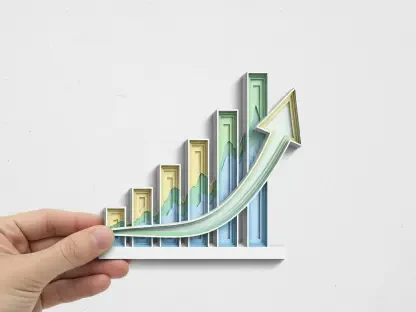The article “US winemakers revive sales with SMS marketing, sustainability and innovation” by Kathleen Willcox explores the innovative strategies that winemakers in the United States are employing to counter the ongoing challenges and decline in wine sales. It takes a comprehensive look at modern marketing techniques, the influence of sustainability, and the adoption of new product formats in the evolving marketplace. The key strategies highlighted include SMS marketing, direct consumer engagement, events, product diversification, and environmental responsibility.
Bringing Wine to the People
Leveraging SMS Marketing for Sales Boost
As the prices of bottles and tasting fees increase, particularly in premium regions like Napa Valley, winemakers are identifying and leveraging opportunities to engage with customers effectively. A notable tactic is SMS marketing, which has proven to yield substantial results in sales. Sandra DeMaria from Ehlers Estate explains that their first trial SMS campaign focusing on unopened email contacts resulted in $25,000 worth of sales in one day. Inspired by this success, they launched subsequent actions that generated $150,000 in sales over a week for a premium product.
Winemakers have found that SMS marketing allows for direct and immediate communication with consumers, leading to quicker conversions and engagement. The immediacy and personal touch of SMS messages compared to emails ensure higher opening and response rates. This approach is especially effective when targeting loyal customers and those who have previously engaged with the brand but did not complete a purchase. By utilizing customer data and preferences, winemakers can craft personalized messages that resonate well and prompt action.
Engaging Customers Through Events
Understanding the diverse customer base and the difficulty many face in visiting vineyards, winemakers are also meeting potential customers where they are. New strategies include wine dinners in key markets, particularly appealing to Millennials and Gen Z, who may find it challenging to travel. These efforts not only help in converting potential customers but also encourage club membership and eventual vineyard visits. The experience of attending a wine dinner or a themed event creates a memorable and intimate connection with the brand, fostering loyalty and repeat purchases.
By organizing events in urban centers and using trendy venues, winemakers can attract younger demographics who appreciate the experience and education that comes with wine tasting events. These events also serve as an opportunity for winemakers to showcase their story, craftsmanship, and passion for winemaking, which can profoundly influence attendees’ perception and buying decisions. Additionally, partnerships with local restaurants and bars can enhance reach, introducing wines to a broader audience in a casual and enjoyable setting.
Personalized Interactions and Sponsorships
Napa’s Priest Ranch and Eleven Eleven Winery have implemented similar initiatives, carefully targeting messages to avoid intrusiveness while supplementing sales with events and sponsorships. Such engagements have demonstrated significant positive effects on sales, with personalized interactions often leading to higher ROI and increased customer loyalty. Personalized interactions, whether via SMS, email, or in-person meetings, reinforce the customer’s importance to the brand and build a deeper emotional connection.
Sponsorships of local events, festivals, and charity functions provide additional touchpoints for engaging with potential customers in a meaningful way. These activities position the wineries as active and supportive community members, enhancing their brand image while providing direct exposure to their wines. Consumers often prefer to purchase from brands they recognize and trust, which these personalized interactions and sponsorships effectively cultivate. This combination of direct marketing and community involvement fosters a loyal customer base that values both the product and the company behind it.
Chardonnay: The ‘Chardcore’ Trend
Shift in Consumer Preferences
The article identifies a shift in consumer preferences from red wines to white wines, notably Chardonnay, which accounts for a significant share of the market growth. Benchmark Wine Group and Sonoma-Cutrer highlight increased interest and sales in premium and collectible Chardonnays, suggesting a robust market for high-quality white wines. The interest isn’t limited to domestic varieties; regions such as France’s Chablis and Spain’s Rías Baixas are seeing increased exports to the USA. This global influence indicates that consumers are expanding their palates and exploring diverse white wine varieties.
Factors contributing to this trend include the refreshing nature of white wines and their suitability for various occasions, from casual gatherings to fine dining. Chardonnay, with its versatility in flavor profiles ranging from crisp and mineral to rich and buttery, appeals to a wide range of tastes. Wine consumers are also increasingly interested in the provenance and production techniques of their wines, leading to more educated purchasing decisions. The growth in popularity of Chardonnays reflects the broader trend of consumers seeking quality and authenticity in their wine choices.
Market Growth for Premium Chardonnays
Benchmark Wine Group customers show a preference for biodynamically farmed and sustainably produced wines, highlighting an industry trend toward environmentally responsible products. Ridgley Evers of AVIVO notes the shift in their marketing language to embrace terms like ‘regenerative farming’ and ‘organic grapes,’ reflecting consumer awareness and demand for sustainable products. The strong performance of premium Chardonnays underscores the willingness of consumers to invest in wines that not only taste great but are also produced with care for the environment.
The market for premium Chardonnays is also driven by age-worthy wines, which can command higher prices and attract collectors. Winemakers focusing on small-batch production and unique terroirs are finding success in positioning their Chardonnays as luxury items. This segment of the market benefits from sophisticated branding and storytelling that conveys the exclusivity and distinctiveness of the product. By emphasizing limited availability and exceptional quality, winemakers can enhance the perceived value of their offerings.
Sustainable Wine Production
Consumer Trust in Sustainability
Sustainability is more than a buzzword; it’s a significant driver of consumer trust and purchasing decisions. The article reports on a survey by Tastewise indicating that 74% of consumers favor brands promoting their environmental impact. Winemakers are thus aligning their production practices with these values. For instance, AVIVO Wines has expanded its CCOF Organic, Biodynamic, and AGW Certified Regenerative credentials, which has substantially grown their market share. Consumers are increasingly concerned with the ecological footprint of the products they buy, making sustainable practices a key selling point.
Adopting sustainable practices goes beyond marketing; it encompasses the entire winemaking process, from vineyard management to packaging. Sustainable winemaking includes the use of natural fertilizers, water conservation techniques, and renewable energy sources. These practices not only reduce the winery’s environmental impact but also ensure the long-term health and productivity of the vineyards. By communicating these efforts transparently, winemakers can build consumer trust and loyalty.
Industry Trends Toward Environmental Responsibility
Benchmark Wine Group customers show a preference for biodynamically farmed and sustainably produced wines, highlighting an industry trend toward environmentally responsible products. Ridgley Evers of AVIVO notes the shift in their marketing language to embrace terms like ‘regenerative farming’ and ‘organic grapes,’ reflecting consumer awareness and demand for sustainable products. This shift indicates that consumers are not just interested in the final product but also in the entire lifecycle of the wine.
The move towards sustainability in wine production is driven by both consumer demand and industry regulations. Many wineries are adopting certifications such as Organic, Biodynamic, and Sustainable, which require adherence to strict environmental standards. These certifications provide a competitive edge, as they appeal to eco-conscious consumers and can justify premium pricing. Additionally, sustainable practices often lead to cost savings in the long run, through reduced reliance on chemical inputs and more efficient resource use.
Innovative Formats for Modern Consumers
Packaging Innovations
With changing consumption habits, particularly among younger demographics, winemakers are adopting packaging innovations like canned wines and bag-in-box formats. These formats align with the preferences for single servings and a lighter environmental footprint. Younger consumers, who prioritize convenience and sustainability, are more open to trying wine in non-traditional packaging. Cans and boxes are not only portable and easy to store, but they also offer better portion control and reduce waste.
Innovative packaging also allows wineries to differentiate their products in a crowded market. Eye-catching designs and unique formats can attract attention on retail shelves and online marketplaces. Moreover, alternative packaging can break down the traditional image of wine being reserved for formal occasions, making it more accessible for everyday consumption. By offering high-quality wine in convenient formats, winemakers can tap into the growing demand for casual and on-the-go options.
Success Stories in Alternative Packaging
Archer Roose Wines is a prime example, offering high-quality canned wines that have significantly grown their retail sales by 46% over the past year by targeting venues and events where their primary consumers are likely to be, such as stadiums and leisure venues. Similarly, Sipwell Wine Co has seen strong growth, driven by the rising popularity of alternative packaging and the appeal of their organic, sparkling wines. The success of these brands demonstrates that consumers are willing to embrace new formats if the product quality meets their expectations.
These success stories also highlight the importance of strategic marketing and distribution. By placing their products in locations where their target audience already spends time, such as music festivals, sporting events, and outdoor activities, winemakers can increase visibility and trial. Partnerships with event organizers and exclusive deals with venues can further boost sales and brand recognition. As more consumers become familiar with alternative packaging, they are likely to seek out these options for their personal enjoyment.
Environmental and Consumer Benefits
Tablas Creek Vineyard underscores this trend with its $95 boxed wine, a format that not only reduces environmental impact but also better preserves the wine for occasional drinkers. Their strategic embrace of boxed wines has resulted in a considerable uptick in direct sales, emphasizing the changing consumer dynamics and the industry’s ability to adapt. Boxed wine offers several environmental benefits, including lower transportation emissions and reduced packaging waste compared to traditional glass bottles.
For consumers, boxed wine provides an extended shelf life once opened, making it an ideal choice for those who enjoy a glass occasionally. This format also appeals to eco-conscious buyers who appreciate the reduced carbon footprint associated with more sustainable packaging. The success of premium boxed wines demonstrates that quality and sustainability can go hand-in-hand, challenging the outdated perception that boxed wine is inferior. By continuing to innovate and meet consumer expectations, the wine industry can thrive in an increasingly eco-aware market.
Conclusion
The article “US Winemakers Revive Sales with SMS Marketing, Sustainability, and Innovation” by Kathleen Willcox delves into the creative strategies that American winemakers are employing to overcome ongoing challenges and a decline in wine sales. The piece provides a thorough look at how modern marketing techniques, especially SMS marketing and direct consumer engagement, are being used to boost sales. Winemakers are reaching out to customers through personalized messages, keeping them informed about new products and events, and building a stronger connection.
The article also emphasizes the impact of sustainability in the wine industry, showcasing how winemakers are adopting eco-friendly practices to appeal to environmentally conscious consumers. This includes reducing carbon footprints, using organic practices, and promoting recycling.
Additionally, the article discusses the importance of product diversification in meeting the evolving tastes of wine drinkers. Winemakers are innovating with new product formats, such as canned wines and unique blends, to attract a broader audience. Special events and experiences, such as wine tastings and vineyard tours, are also highlighted as effective ways to engage and retain customers. In essence, the article presents a comprehensive view of how U.S. winemakers are navigating a changing market by leveraging modern marketing, commitment to sustainability, and innovative products.









